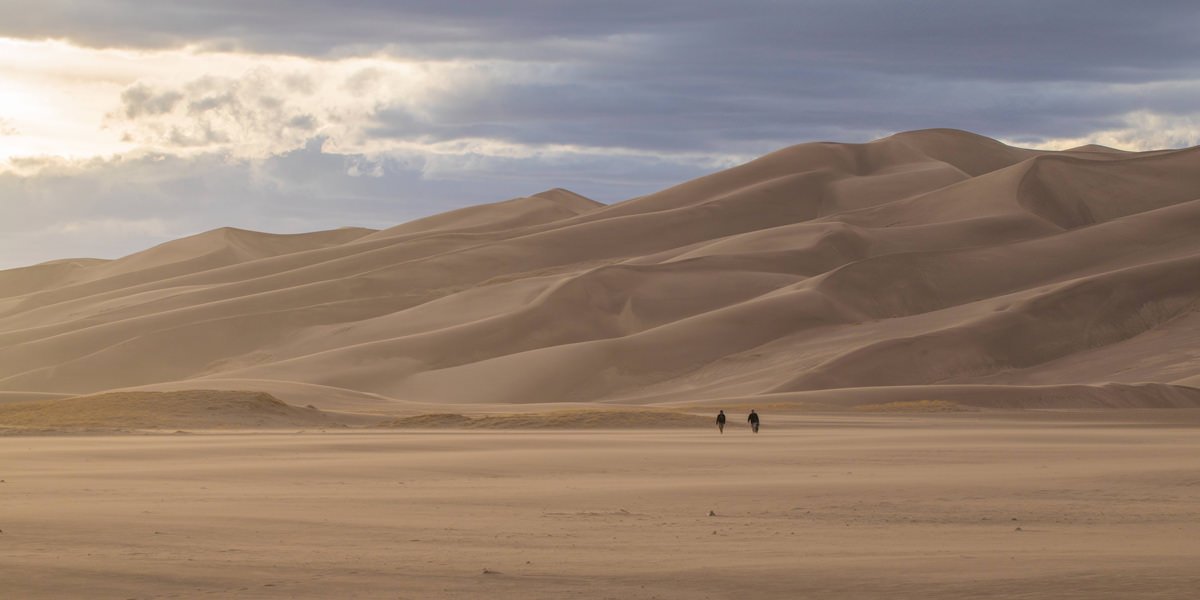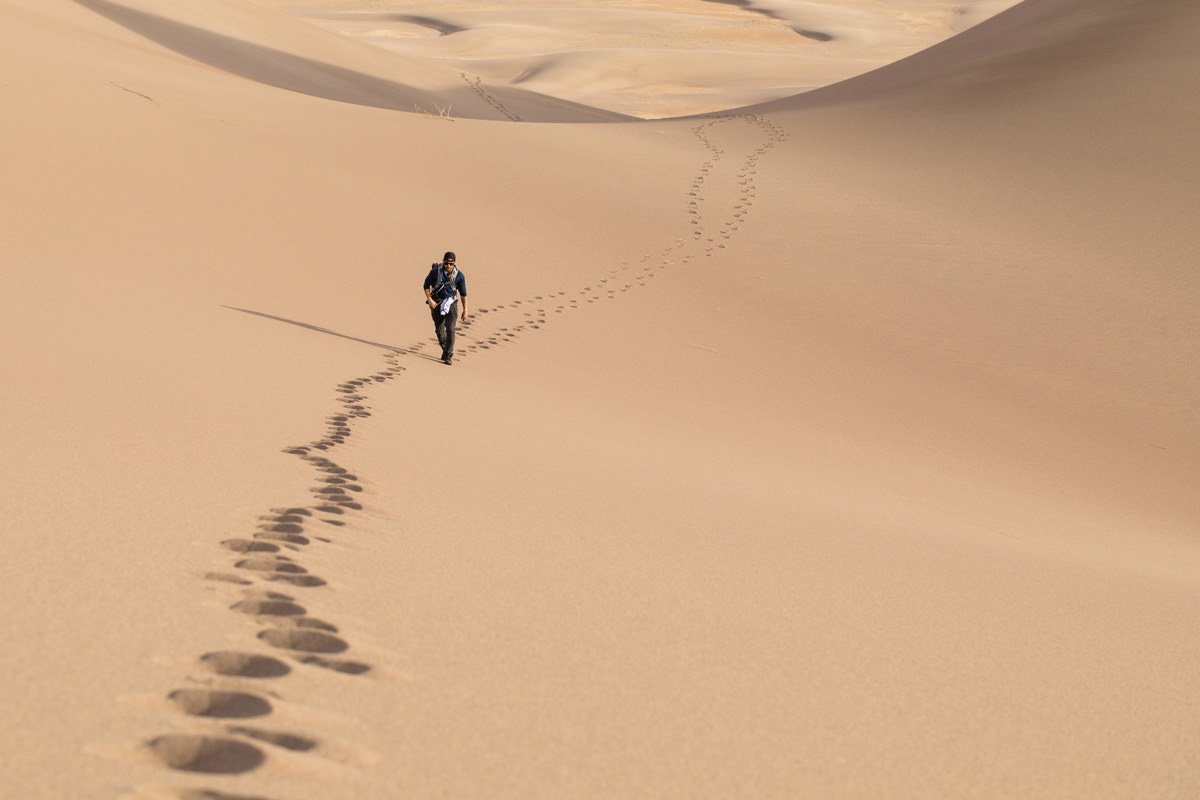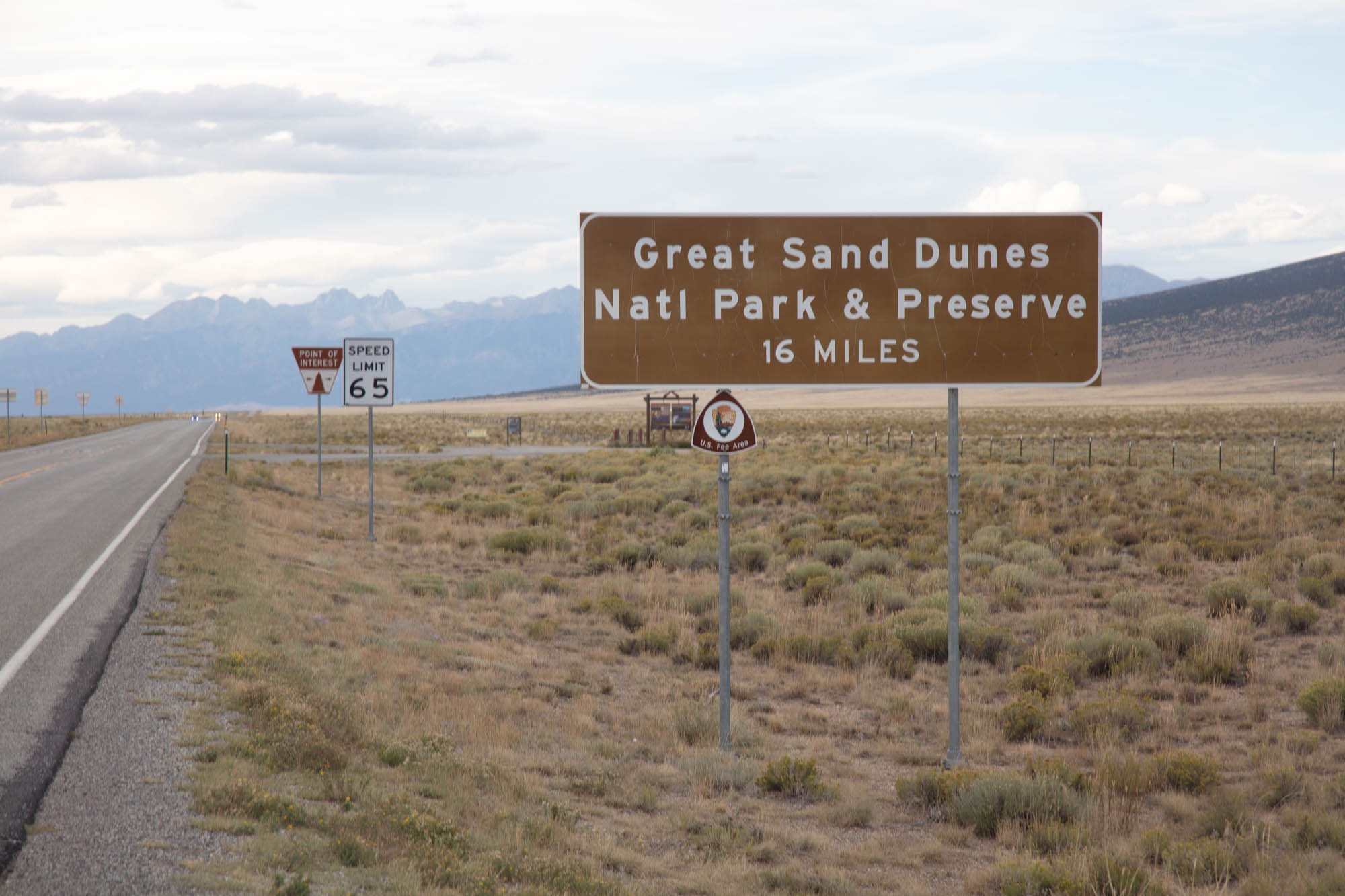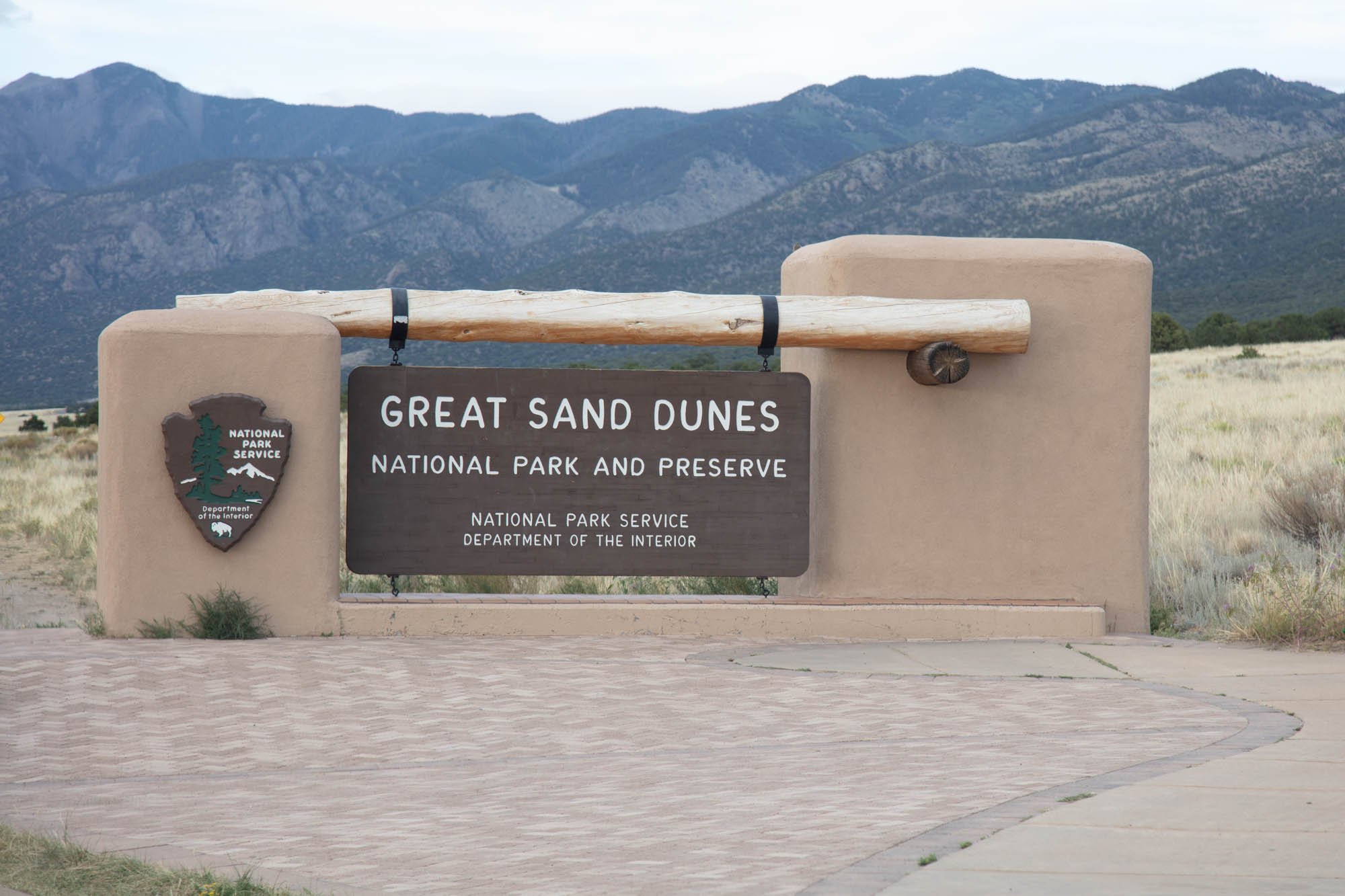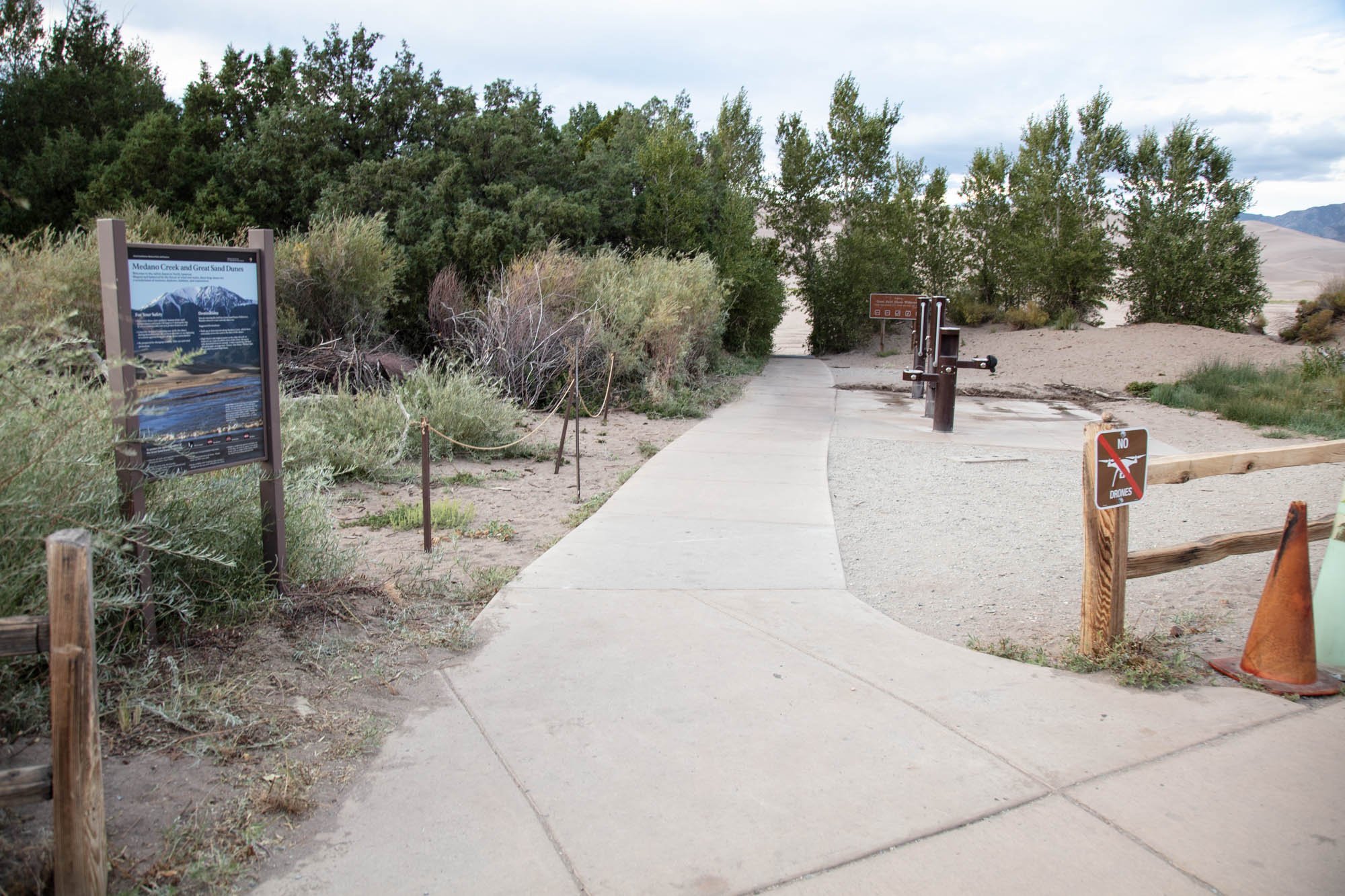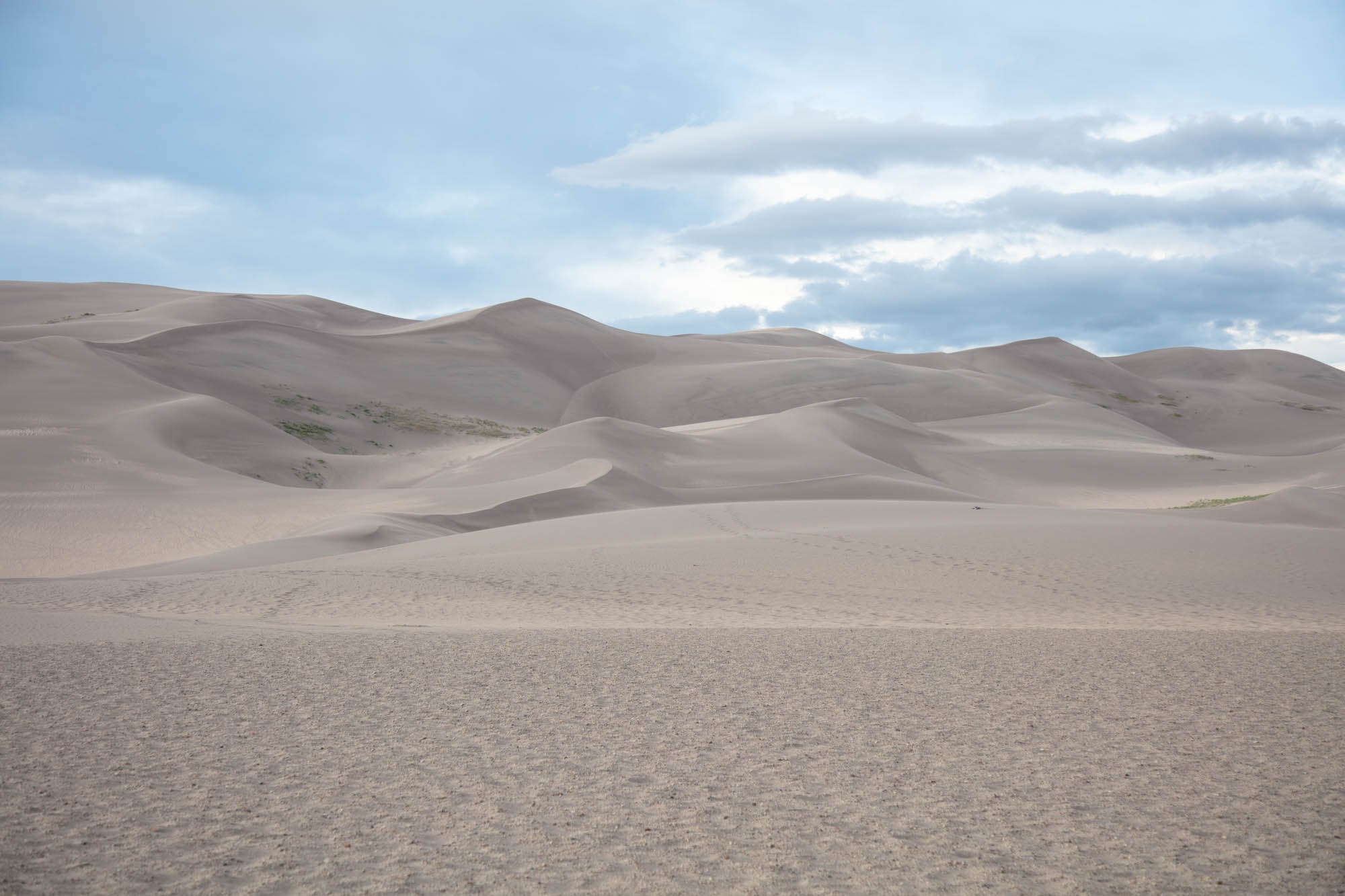Great Sand Dunes
GREAT SAND DUNES
Southwestern Colorado
Image by Wolfe Repass @ www.instagram.com/wolferphoto or www.wolferepass.com
Amidst the high desert brush land in south-central Colorado lie the Great Sand Dunes National Park, the tallest sand dunes in North America. Over 750 ft. tall and covering over 30 square miles, the dunes within Great Sand Dunes National Park are an imposing force as they rise out of the San Luis Valley.
Surrounded on the north and east by the 13,000+ ft. Sangre de Cristo mountain range, the dunes create an incredible landscape worthy of at least 2-3 days of your time. Depending on the time of year, snow-capped peaks, seasonal creeks, and colorful wildflowers provide for a multitude of creative photographic opportunities.
Photos and location summary by Wolfe Repass
Trail Difficulty - MODERATE to HARD
I would rate the difficulty of this trail as a 2-4 on a scale of 1-5 (with 5 being most difficult).
The trail difficulty depends on where you shoot. If you stay along the flat area near the creek bed, I would rate it as a 2 on a scale of 1-5 (with 5 being the most difficult). This entire area is sand, so it is similar to walking on a beach. At certain times of the year, Medano Creek will be flowing across this flat area (particularly in late spring and early summer), but it is usually shallow enough to walk through comfortably.
If you decide to climb the dunes for different shot perspectives (like the photo above), I would rate the trail as a 4 due to:
steep climbing on sand - climbing a 750 foot tall mountain is challenging, but when that mountain is made out of sand it becomes exponentially more difficult,
there is no shelter from the sun and sand surface temperatures during the summer can reach up to 150 °F, so it is important to come prepared and avoid getting caught out at the wrong time,
there are no trees or shelters on the dunes to protect oneself from exposure,
the high elevation - Elevation within the park ranges from 8,200 feet to 13,604 feet (2,499m– 4,146m), which means that sun exposure is more severe and can quickly lead to dehydration or worse. The elevation also makes it harder to climb and
there are no designated trail markers - the farther you go from the parking area, the easier it is to lose your path.
The road to and within the Park are well-maintained, paved roads. The dunes are accessible from several clearly designated parking areas north of the Visitor’s Center, with the primary one called “Dunes Parking”. From each parking lot, it is a simple 30-50 meter walk to the sandy area that surrounds the main dune field.
GPS Coordinates & Elevation
8,200 to 13,604 ft - Elevation (depending on where you are on the dunes)
View In Google earth
Directions
CLICK HERE to get driving directions to Great Sand Dunes National Park visitors center.
From Denver
Travel on US-285 for 90 miles until you get to Buena Vista, CO. Turn left (south) and continue on US-285/CO-17 for 86.6 miles until you a turn-off for the Great Sand Dunes National Park. Travel on Lane 6 N for 16.1 miles until you reach CO-150 N. Take a left (north) on CO-150 for 5.9 miles until you reach the visitors center. From the visitors center continue a 1 mile until you see the turnoff for the Great Sand Dunes Parking area.
From Alamosa
Travel west on US-160 for 14 miles and then turn left (north) on CO-150 N for approximately 19 miles until you enter the park. You can access the dunes in several locations including the dunes parking or at the Pinon Flats campgrounds.
Photography Tips
Photography at the Dunes is all about contrast and depth. For me, shooting the dunes is about curves, lines, dimension, contrast, shapes, and shadows. You are often looking for an abstract in the middle of the obvious. Flat light makes it difficult to capture these moods, so shooting early in the morning or late in the afternoon/evening provides the best photographic opportunities.
Special Note: The Dunes are constantly shifting shapes as they are formed and moved by wind, so what is present one year may be completely different the next. It is important to stop and look at what you are seeing to identify unique photos.
Best Time of Day to Shoot
The best time to shoot this location is whenever the sun is not directly overhead (early morning, late afternoon, or sunset). The closer the sun is to the horizon, the larger the shadows will be on the dunes which provide for nice contrast and depth in a photo.
Best Time of Year
You can shoot this location year-round if you are trying for shots of the dunes only. However, the park itself has good wildflowers from late spring through mid-summer, and the mountains surrounding the dunes have a few aspens that change colors in the fall. Winter and spring can also be a good time as snow covers the surrounding peaks.
Lens(es) Needed
Given the vastness of the dunes there are multiple composition opportunities. I suggest bringing a range of lenses that cover ultra-wide-angle (16mm – 35mm) to mid telephoto (70mm – 200mm) to provide flexibility. The shot above was taken with a 100mm lens.
Birds-Eye View
Permits
A National Park Pass is required to access the dunes. A 7-day pass can be purchased at the entrance to the Park for $35.
Direction of the Shot
At the Great Sand Dunes, you will primarily be shooting west, northwest or north. The shot above was taken shooting southwest from the top of a dune @ approximately 230°.
Equipment Needed
Large sand dunes are like few other places you will photograph.
Other than photography equipment, make sure you bring a hat, sunglasses, sunscreen, and plenty of water. If you are hiking on the dunes late in the afternoon or evening, bring a flashlight/headlamp and compass and/or GPS to help navigate back to the car as darkness sets in.
In addition to protecting yourself, it is important to protect your camera gear. Sand can and will get inside your gear if you are not careful, so bring your camera bag and make sure to cover your gear during wind gusts.
The Great Sand Dunes has the potential for very high winds. On windy days, you should expect to get pelted by fine sand particles while climbing and shooting. Wearing long sleeves and pants with covered-toed shoes (or going bare foot) will make your experience much more enjoyable.
Number of Other Photographers to Expect
Visitation to the Dunes varies based on time of year, but even during the busiest periods (Memorial Day through Labor Day), the majority of visitors will stay near Star Dune, which is the tallest dune in the Park and closest to the main parking lot. Staying near this area presents an issue with footprints, so I suggest walking north or south of this area to find clean, fresh dunes. You will not encounter many other photographers outside of the main area.
Weather
The weather in Colorado is normally mild in the summer and cold (lows in the 20’s) in the spring and fall. Great Sand Dunes National Park and Preserve is open 24 hours a day, 7 days a week, year round.
Cell Service
I have Verizon and there is good cell service in most of the park. There are a few places where service is limited to no cell service.
Lodging & Camping
The closest town to the Great Sand Dunes National Park, is Alamosa, CO - which is about 30 miles southwest. It is a moderately sized community with several hotels.
There is VERY NICE campground just down the road from the visitors center called Piñon Flats Campground. It has 85+ campsites and the cost $20 per night for singles. Reservations can be made from May 1 - September 20. Other times of year are first come, first served.
Another nice option which is very close to the national park is the Great Sand Dunes Lodge. The lodge includes rooms, cabins and primitive camping sites and a decent place to grab some grub.
Nearby camping and lodging
Camping - click on the campground below for directions
Piñon Flats Campground (3 miles away)
Zapata Falls Campground (12 miles)
Reserve through the Recreation One-Stop system online or contact them by phone at 877 444-6777.
Lodging - click on the lodging below for a TripAdvisor review
Great Sand Dunes Lodge
7900 State Highway 150, Mosca, CO
(719) 378-2900
Comfort Inn & Suite
6301 W US Highway 160, Alamosa
(719) 587-9000
Fairfield Inn & Suites
721 Mariposa St, Alamosa, CO
844-631-0595
Nearby Restaurants
The closest town (30 min south) to the Great Sand Dunes National Park, is Alamosa, CO, which has a several selections of eateries to chose from.
As mentioned above, there is a grill at the Great Sand Dunes Lodge just outside the national park. It is not going to be a destination during restaurant week, but they serve a nice breakfast and burger.
Nearby Restaurants - click on the restaurant below for yelp review
The Rubi Slipper
506 State Ave, Alamosa, CO
(719) 589-2641
Locavores
2209 Main St. Alamosa, CO
(719) 589-2157
Calvillo’s Mexican Restaurant
400 Main St. Alamosa, CO
(719) 587-5500
Area Guides and Workshops
A GREAT resource for photographing The Great Sand Dunes (and all things sand dunes) is the “How to Photograph Sand Dunes of the American Southwest” written by Rob Strain. This 188 page e-book provides great information on planning your trip to the dunes, composition, safety, checklist for equipment, post processing and maps to The Great Sand Dunes and 11 other sands dunes in the US.
A must have when shooting dunes. ..


